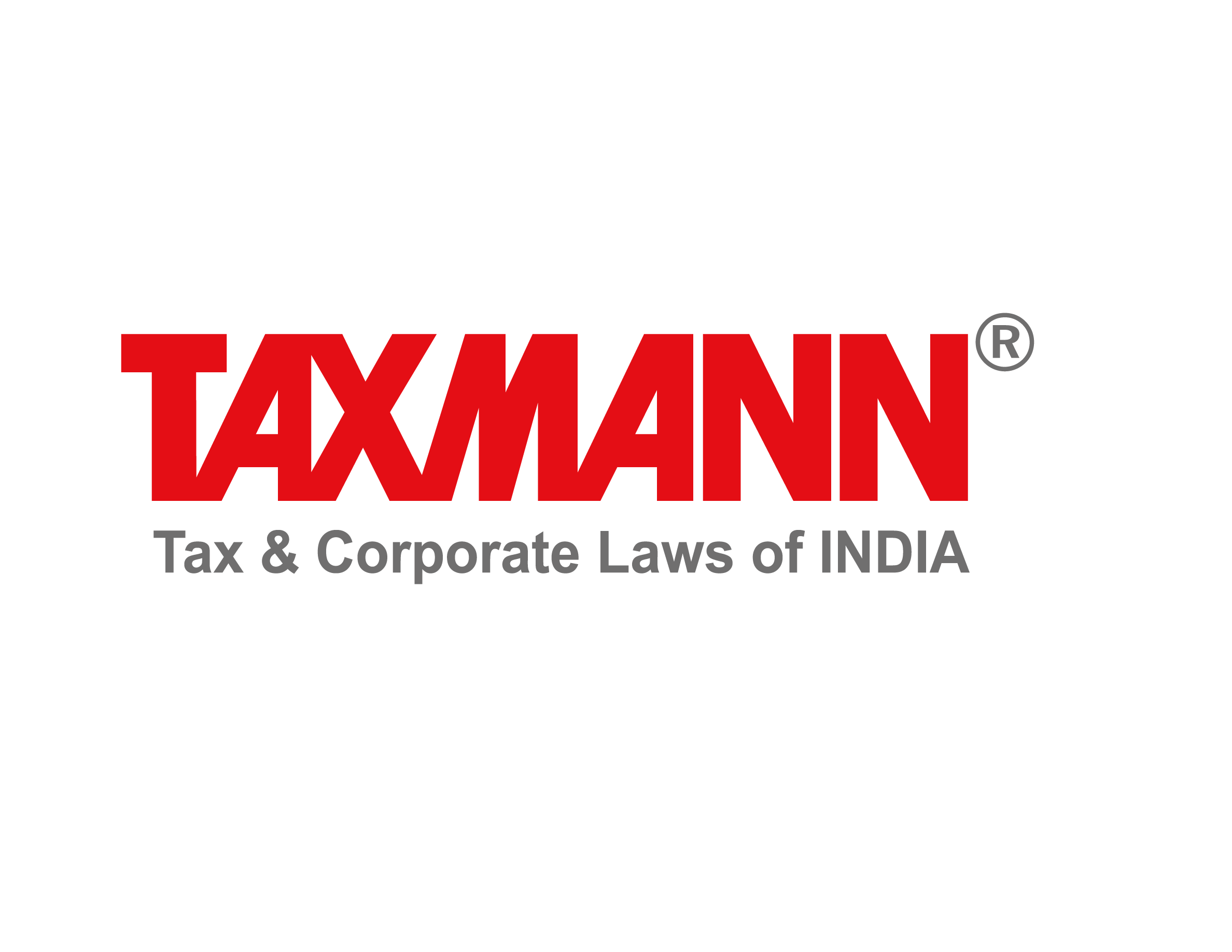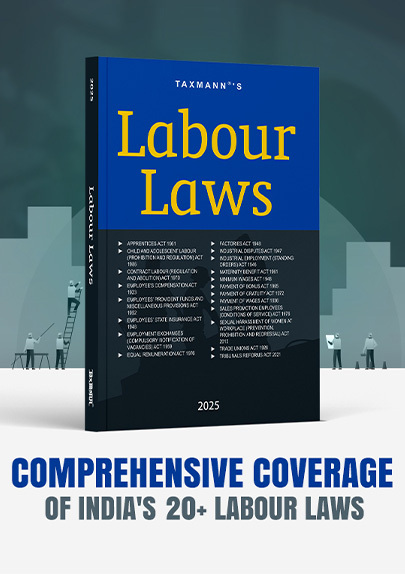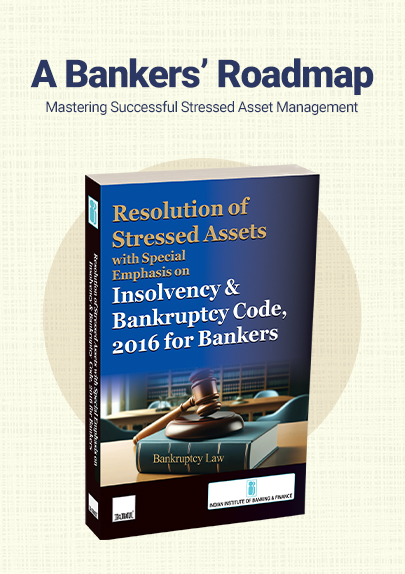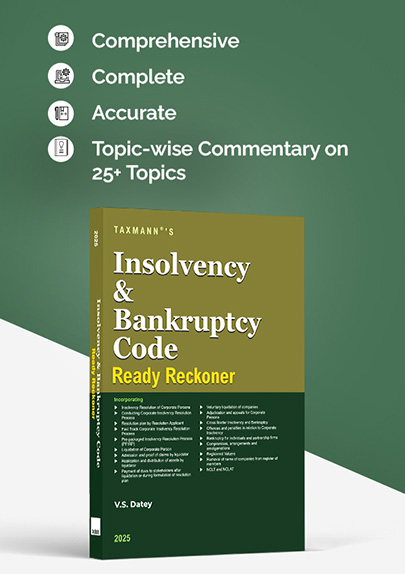Weekly Round-up on Tax and Corporate Laws | 7th to 12th April 2025
- Blog|Weekly Round-up|
- 10 Min Read
- By Taxmann
- |
- Last Updated on 15 April, 2025
This weekly newsletter analytically summarises the key stories reported at taxmann.com during the previous week from April 07th to 12th, 2025, namely:
- Surcharge to be levied on private discretionary trust shall be computed as per slab rates: ITAT Special Bench;
- CBDT notifies form ‘ITR-B’ for furnishing ITR for block assessment;
- RBI issues ‘Statement on Developmental and Regulatory Policies’; proposes co-lending framework for all REs;
- Order to be quashed as parallel proceedings by CGST and SGST authorities in relation to same year and same issue are impermissible: HC;
- Lack of required particulars in Section 74 proceedings results in reclassification to Section 73 granting eligibility for GST Amnesty Scheme: HC; and
- Accounting treatment of the development of accounting software as per the Accounting Standards framework.
1. Surcharge to be Levied on Private Discretionary Trust Shall Be Computed as per Slab Rates: ITAT Special Bench
The assessee, Araadhya Jain Trust, a Private Discretionary Trust, filed its return of income for AY 2023–24, declaring income of Rs. 4,85,290. It paid tax at the “maximum marginal rate” as per section 164 read with section 2(29C) of the Income-tax Act.
While processing ITR, the Centralized Processing Centre (CPC) levied a surcharge at the highest rate on the computed tax. The assessee contended that the surcharge should not apply since the total income was below Rs. 50 lakhs. Both the CPC and the CIT(A) rejected this argument, citing that the definition of “maximum marginal rate” includes the highest surcharge, hence applicable regardless of income level.
A Special Bench was constituted by the Hon’ble President of ITAT, in terms of section 255(3) of the Income Tax Act, 1961, to decide the following issue:
“Whether, in the case of private discretionary trusts whose income is chargeable to tax at maximum marginal rate, surcharge is chargeable at the highest applicable rate or at a slab rates?
The Tribunal held that section 2(29C) of the Act defines the maximum marginal rate as the highest slab rate of income tax in the case of an individual or association of persons, as specified in the Finance Act. The section does not make any reference to the levy of surcharge.
The expression ‘including Surcharge on income-tax, if any’ within the bracketed portion of section 2(29C) of the Income Tax Act, would mean the surcharge as provided in the computation mechanism under the heading ‘surcharge on income tax’ provided in section 2 of the Finance Act.
The different rates of surcharge on income tax provided under the First Schedule to the Finance Act, 2023 for different slabs of income would become meaningless so far as discretionary trusts are concerned if the highest rate of surcharge is applied to the maximum marginal rate of tax.
In other words, the rate of surcharge has to be determined in terms with the rate prescribed under the schedule to section 2(1) of the relevant Finance Act and not at the maximum marginal rate, irrespective of the quantum of income or the rates provided under the schedule.
The Finance Act contains separate provisions for the levy of surcharge, and there is no reference to the maximum marginal rate in those provisions. Therefore, the surcharge must be computed at the rates prescribed in the Finance Act for the relevant assessment year. The levy of surcharge at the maximum marginal rate was not justified.
Accepting Revenue’s view would render the entire slab-based surcharge mechanism meaningless and cause absurd results. Accordingly, it held that a surcharge should be levied based on the slab rates applicable to the total income.
Read the Ruling
2. CBDT Notifies Form ‘ITR-B’ for Furnishing ITR for Block Assessment
The Central Board of Direct Taxes (CBDT) has notified the Income-tax (10th Amendment) Rules, 2025, inserting Rule 12AE to the Income-tax Rules, 1962. The rule provides that the return of income required to be furnished by any person under section 158BC(1)(a) relating to any search initiated under section 132 or requisition made under section 132A on or after 01-09-2024 shall be in the Form ITR-B.
Any person whose accounts are required to be audited under section 44AB of the Act, a company, or a political party shall furnish the return electronically under digital signature. All other persons can submit ITR using an electronic verification code. The form seeks the following details:
2.1 General Information
-
- Personal and business details (e.g., PAN, name, contact information, Aadhaar, and residential status).
- Information about the search initiation date, the block period, and return details in response to the notice under section 158BC.
2.2 Income Details
-
- Breakdown of income for the assessment years comprising the block period.
- Categories include salaries, income from house property, business or profession, capital gains, income from other sources, and the total income for each assessment year.
2.3 Undisclosed Income
-
- Computation of undisclosed income for the block period, specifying sections under the Income-tax Act (e.g., section 158BB) and categorizing income by type (e.g., speculative business, international transactions).
2.4 Tax Payable
-
- Computation of tax payable on undisclosed income, including surcharge and health and education cess.
- Total tax payable, taxes paid, and balance payable/refundable.
2.5 Tax Credits and Payments
-
- Details of TDS/TCS credits and self-assessment tax payments not previously claimed.
Read the Notification
Read the Article
3. Key Highlights of RBI’s Statement on Developmental and Regulatory Policies
On April 9, 2025, the RBI’s Monetary Policy Committee, in its 54th meeting, decided to reduce the policy repo rate by 25 basis points to 6.00% with immediate effect. Accordingly, the Standing Deposit Facility (SDF) rate under the Liquidity Adjustment Facility (LAF) stands revised to 5.75%, while the Marginal Standing Facility (MSF) rate and the Bank Rate are adjusted to 6.25%.
The RBI has also announced a series of developmental and regulatory policy measures aimed at strengthening India’s financial ecosystem. These initiatives focus on three key areas relating to (a) Regulations, (b) Payment Systems, and (c) Fintech. The proposals seek to enhance operational efficiency, promote financial inclusion and encourage responsible innovation in the financial sector. The Key proposals are discussed in detail below –
3.1 UPI Transaction Limits to be hiked for Person-to-Merchant Payments
Currently, the transaction limit for UPI, which covers both Person-to-Person (P2P) and Person-to-Merchant (P2M) payments, is capped at Rs 1 lakh except for specific use cases of P2M payments that have higher limits, some set at Rs 2 lakh and others at Rs 5 lakh.
To enable the ecosystem to respond efficiently to new use cases, the RBI has proposed that the National Payments Corporation of India (NPCI), in consultation with banks and other stakeholders of the UPI ecosystem, may announce and revise P2M limits with appropriate safeguards.
However, P2P transactions will remain capped at Rs. 1 lakh. This proposal aims to encourage greater flexibility in UPI transactions, supporting the growth of the digital payment ecosystem.
3.2 RBI to review guidelines for ‘Lending against Gold Jewellery’
Loans against the collateral of gold jewellery and ornaments are extended by regulated entities (REs) for both consumption and income-generation purposes. Prudential and conduct-related regulations for such loans have been issued periodically and vary across different categories of REs.
To harmonise these regulations while considering the risk-taking capabilities of REs, the RBI has decided to issue comprehensive guidelines on prudential norms and conduct-related aspects for such loans. This move aims to standardise gold loan regulations, improve risk checks and ensure equal customer protection.
3.3 Draft framework for ‘Securitisation of Stressed Assets’
The RBI has proposed a framework to enable the securitisation of stressed assets through a market-based mechanism in addition to the existing asset reconstruction company (ARC) route under the SARFAESI Act, 2002. The SARFAESI Act provides a specific framework for the securitisation and reconstruction of financial assets through the transfer of such assets to an ARC.
‘Securitisation of stressed assets’ involves transactions where the risk of recovery from stressed assets is distributed among investors by repackaging them into tradeable securities with varying risk profiles.
3.4 Expansion of Co-Lending Guidelines to include all Regulated Entities
Currently, co-lending guidelines apply only to arrangements between banks and NBFCs for priority sector loans. The RBI has now proposed expanding the scope of co-lending and issuing a generic regulatory framework for all forms of co-lending arrangements among regulated entities. This move aims to enhance the efficiency of lending and increase credit flow to underserved sectors, promoting greater financial inclusion.
3.5 RBI proposes to make Regulatory Sandbox facility available on a ‘Theme-Neutral’ and ‘On Tap’ Basis
The RBI has been operating the Regulatory Sandbox (RS) framework since 2019, with four specific thematic cohorts announced and completed to date. A fifth theme-neutral cohort with a specified time window for receiving applications was also announced in October 2023 and is scheduled to close in May 2025.
To further encourage innovation, the RBI has proposed making the Regulatory Sandbox ‘Theme Neutral’ and ‘On Tap’, allowing continuous submission of applications for eligible products within the RBI’s regulatory scope. This move aims to support ongoing FinTech innovation and adapt to an evolving regulatory landscape.
A ‘Regulatory Sandbox’ is a controlled testing environment provided by regulators where businesses can test innovative financial products, services, or models under real market conditions. This allows companies to experiment with new ideas while ensuring consumer protection and risk management before fully launching them in the market.
3.6 Conclusion
These proposals aim to create a stronger, more inclusive and innovation-friendly financial ecosystem in India. By allowing the NPCI to enhance the UPI transaction limit for P2M payments, reviewing guidelines for lending against gold jewellery, expanding co-lending guidelines to cover all REs, and proposing to make Regulatory Sandbox facility available on a ‘Theme Neutral’ and ‘On Tap’ basis, the RBI aims to strengthen the regulatory framework, promote innovation and enhance financial inclusion across the ecosystem.
Read the Press Release
4. Order to be Quashed as Parallel Proceedings by CGST and SGST Authorities in Relation to the Same Year and Same Issue are Impermissible: HC
The Hon’ble High Court held that parallel proceedings by CGST and SGST authorities for the same year and issue are impermissible. The Court reasoned that such dual adjudication by both authorities, based on identical contentions, contravenes the legal principle of avoiding duplication in proceedings. This was held in Fortune Healthcare Services vs. Assistant Commissioner [2025].
Facts
The assessee filed a writ petition before the Hon’ble High Court challenging parallel proceedings initiated by both CGST and SGST authorities for the period 2018-19. A show cause notice was issued which culminated in two separate adjudication orders under section 73(9) of the CGST Act and the Karnataka GST Act based on the same contentions. Upon rejection of the assessee’s request for rectification, the assessee approached the Court contending that such parallel proceedings by dual authorities on the same issue and period were impermissible in law.
Held
The Hon’ble High Court held that the respondents had initiated parallel proceedings for the same year by putting forth the very same contentions, which was impermissible. Accordingly, the impugned show cause notice and adjudication orders were quashed.
Read the Ruling
5. Lack of Required Particulars in Section 74 Proceedings Results in Reclassification to Section 73 Granting Eligibility for GST Amnesty Scheme: HC
The Hon’ble Karnataka High Court held that in the absence of allegations of fraud, misstatement, or suppression, proceedings erroneously invoked under Section 74 must be reclassified under Section 73, thereby entitling the assessee to relief under the GST Amnesty Scheme. Observing that the impugned order was passed ex parte and lacked jurisdictional foundation, the Court set it aside and directed fresh adjudication under Section 73. This was held in Srinivasa Shetty v. Commercial Tax Officer [2025].
Facts
The petitioner challenged the order, issued by the respondent Commercial Tax Officer, which was styled as being passed under Section 74 of the CGST/KGST Act, 2017. The petitioner contended that although the order invoked Section 74, there were no allegations of fraud, misstatement, or suppression of facts, which are essential ingredients for invoking that section. Instead, the contents and nature of the proceedings aligned more appropriately with Section 73 of the Act. On this basis, the petitioner sought the benefit of the GST Amnesty Scheme under Section 128A, which is applicable to cases falling under Section 73. It was further submitted that the impugned order had been passed ex parte, without granting sufficient opportunity to the petitioner. The petitioner thus sought quashing of the impugned order, a direction for reassessment under Section 73, and access to the amnesty benefits.
Held
The Karnataka High Court held that the impugned order lacked the necessary ingredients of Section 74 and was in effect a proceeding under Section 73. Noting the ex parte nature of the order, the Court set it aside and remitted the matter for fresh consideration under Section 73, directing the respondent to allow the petitioner to apply for amnesty benefits. The Court clarified that the order was passed in the special facts of the case and would not serve as a precedent.
Read the Ruling
6. Accounting treatment of the development of accounting software as per Accounting Standards framework
Developing internally generated intangible assets, such as software, requires careful distinction between research and development phases. This classification is vital for ensuring compliance with Accounting Standard (AS) 26, Intangible Assets, which sets out clear guidelines for recognition and measurement. The standard mandates that expenditure during the research phase should be expensed as incurred, while development phase costs may be capitalised if specific criteria are met.
The research phase typically involves activities such as feasibility studies, market analysis, and user consultations. These are exploratory in nature and do not result in a separately identifiable asset. Since these activities do not meet the recognition criteria outlined in AS 26, expenditures incurred must be charged to the statement of profit and loss. The reasoning is that the outcome of research activities is uncertain and does not provide the degree of assurance necessary to recognise an asset.
In contrast, development phase costs can be capitalised if the enterprise demonstrates: (a) technical feasibility; (b) intention to complete and use/sell the asset; (c) ability to use/sell it; (d) potential for generating future economic benefits; (e) adequate resources to complete development; and (f) ability to reliably measure the expenditure. These conditions collectively ensure that the resulting intangible asset has probable economic value and can be reliably recorded in the books of accounts.
For example, consider a medium-sized automobile parts manufacturer that decided to upgrade its outdated accounting software. In FY 20X1–X2, the company undertook market and UX research to evaluate feasibility, incurring ₹10 lakhs in the process. As these were exploratory, they were expensed. In FY 20X2–X3, the company proceeded with development, investing ₹20 lakhs to build modules, integrate systems, and implement data security features. Having fulfilled all the criteria under AS 26, these costs were capitalised as an intangible asset, with amortisation to follow from the date the software becomes usable.
Thus, in accordance with AS 26, companies must evaluate each project phase separately. While research costs are charged off, development costs, if aligned with the standard’s recognition framework, can be capitalised and reflected as intangible assets in the balance sheet. This approach ensures both transparency and accuracy in financial reporting for internally developed software.
Read the Story
Disclaimer: The content/information published on the website is only for general information of the user and shall not be construed as legal advice. While the Taxmann has exercised reasonable efforts to ensure the veracity of information/content published, Taxmann shall be under no liability in any manner whatsoever for incorrect information, if any.

Taxmann Publications has a dedicated in-house Research & Editorial Team. This team consists of a team of Chartered Accountants, Company Secretaries, and Lawyers. This team works under the guidance and supervision of editor-in-chief Mr Rakesh Bhargava.
The Research and Editorial Team is responsible for developing reliable and accurate content for the readers. The team follows the six-sigma approach to achieve the benchmark of zero error in its publications and research platforms. The team ensures that the following publication guidelines are thoroughly followed while developing the content:
- The statutory material is obtained only from the authorized and reliable sources
- All the latest developments in the judicial and legislative fields are covered
- Prepare the analytical write-ups on current, controversial, and important issues to help the readers to understand the concept and its implications
- Every content published by Taxmann is complete, accurate and lucid
- All evidence-based statements are supported with proper reference to Section, Circular No., Notification No. or citations
- The golden rules of grammar, style and consistency are thoroughly followed
- Font and size that’s easy to read and remain consistent across all imprint and digital publications are applied




![Taxmann's [Virtual] Workshop | Succession Planning via Cross-Border Private Family Trusts – Income Tax & FEMA Perspectives](https://www.taxmann.com/post/wp-content/uploads/2025/04/Succession-Planning-via-Cross-Border-Private-Family-Trusts__blogimage_-1.jpg)






 CA | CS | CMA
CA | CS | CMA


